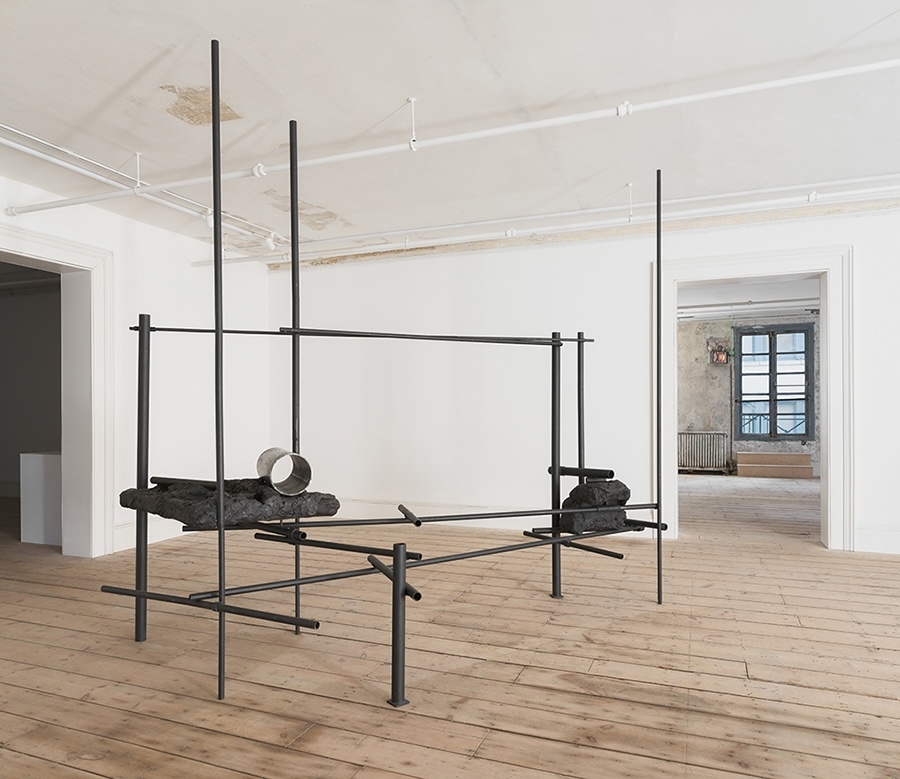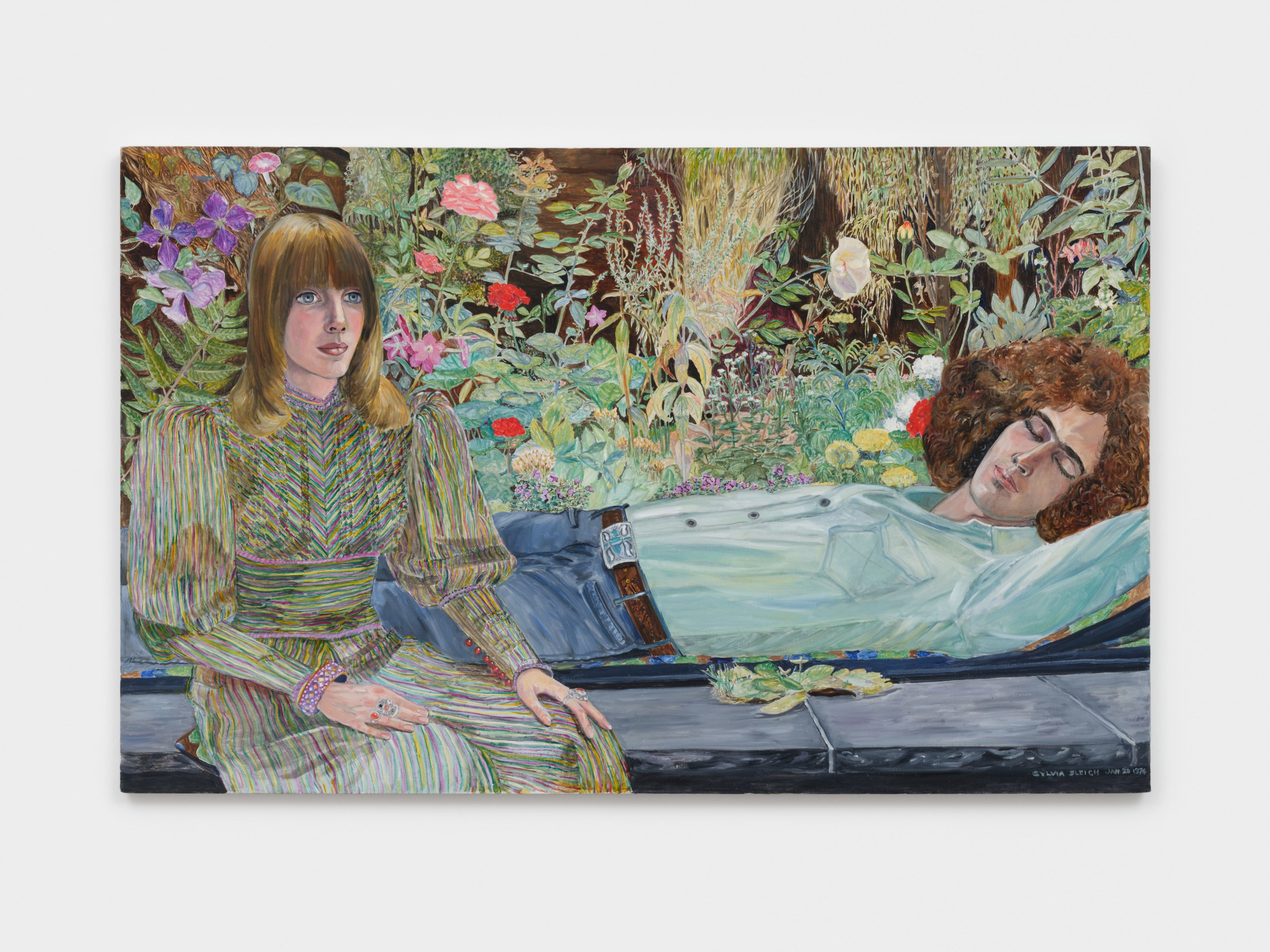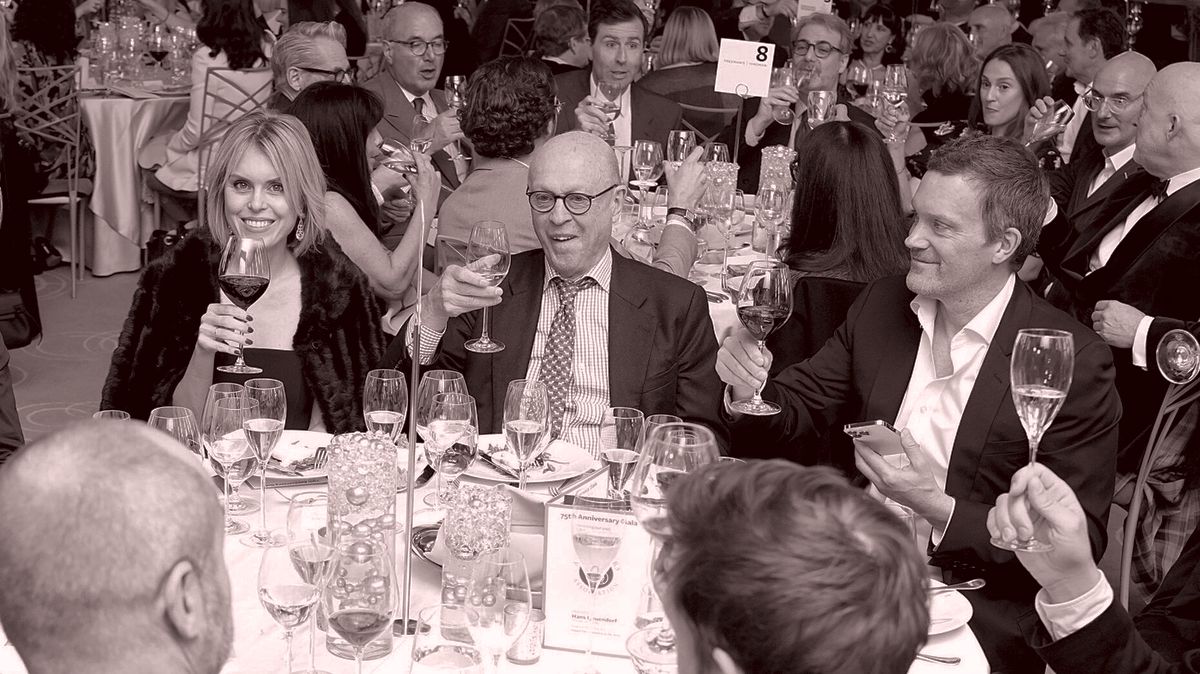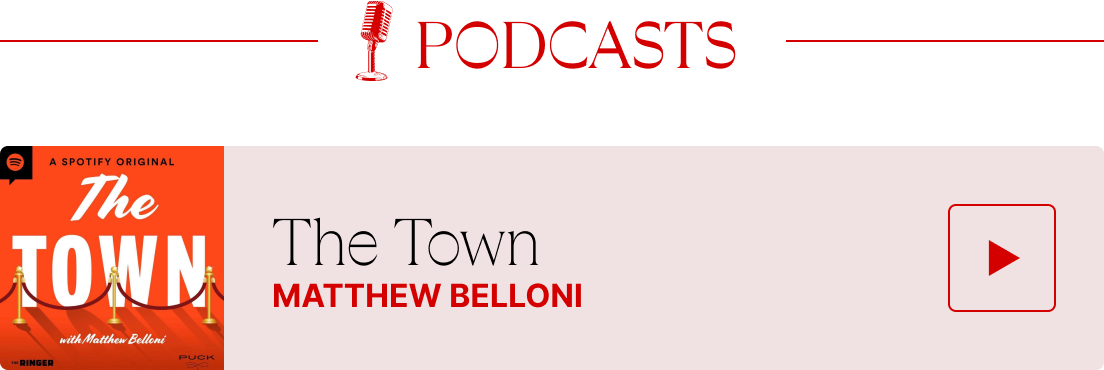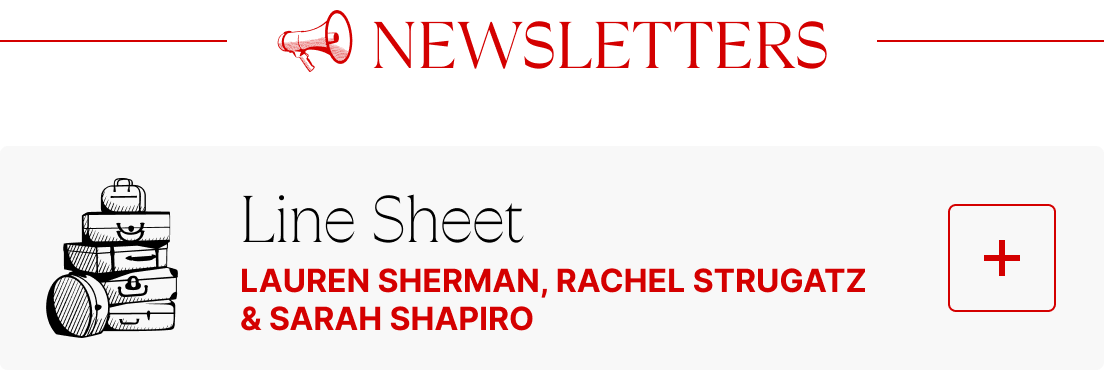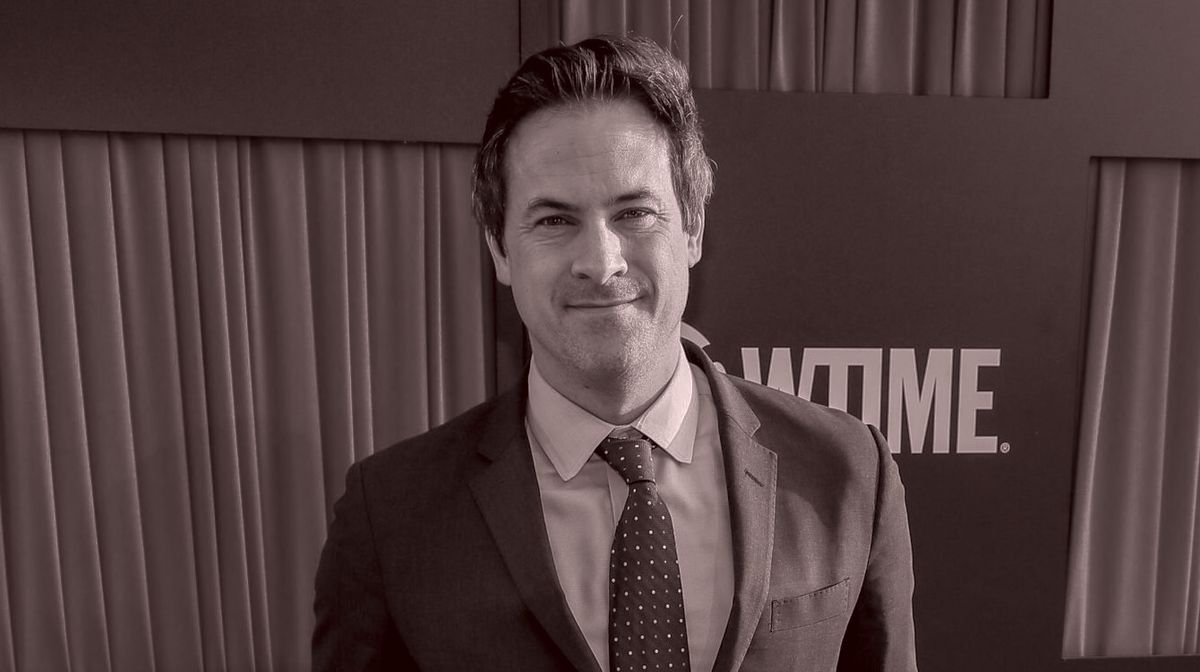Welcome Back to Wall Power. I’m Marion Maneker.
The battle for Artnet ended yesterday in Berlin, not with a bang but with a whimper. There were, however, plenty of fireworks at the company’s long-delayed—since 2023!—annual general meeting. Several shareholders who were there told me it was a wild, 14-hour day. Tonight, I’ll take you through what happened and explain why Artnet may now be in play.
But first…
|
- Tyler Mitchell’s street party: Celebrated fashion photographer Tyler Mitchell and Gagosian gallery director Antwaun Sargent have had a personal and professional relationship for a decade—ever since the latter wrote The New Black Vanguard and curated a traveling exhibition
of Black fashion photographers featuring the former’s work. Sargent also represents Mitchell at Gagosian, where, last night, the crowd waiting in line for Ghost Images, the gallery’s first show of Mitchell’s work, transformed into a Chelsea street party. Ghost Images features Mitchell’s oversize photographs and objects like mirrors and armatures draped in fabric, the mirrors and fabric both printed with his images. (The night before, I attended a far more staid preview of
Ghost Images, organized by my friend Vincent Thompson, a private banker with Bank of America.)
In any case, I wasn’t surprised when Antwaun told me in advance of the opening that sales were going well, with great institutional support and demand from very good collectors. He said all of the unique works were already sold, and that he expected to have all of the prints placed with older and newer collectors by the end of last night. Selling out a photography show
in the current environment, when the photography market has narrowed greatly, is no small feat. “In a painting-obsessed world, it builds confidence that an image-maker like Tyler is well supported,” Antwaun told me. “That the gallery is investing in a young photographer shows how forward-thinking Larry is—he recognizes that what matters is that the art is good, regardless of the medium.”
- Inner Circle housekeeping: If you signed up for
the Wall Power Inner Circle but are having trouble getting the full Inner Circle email, or cannot access the Inner Circle content on Puck’s website, please respond to this email and copy Fritz@puck.news, or contact Fritz directly. Please do get in touch, so we can resolve any problems. We want your reading experience to be as smooth and effortless as possible.
|
- Jilaine Jones at 15 Orient: Last November, a wise art advisor urged me to visit the new Tribeca gallery space of 15 Orient, noting that “most artists who started at 15 Orient are exceptional.” Earlier this month, the same advisor sent me a link to Hilton Als’s review of Jilaine
Jones’s debut with 15 Orient, called A Walk with D. Ann. The advisor was too polite to say it, but the link was an “I told you so.” Jones wasn’t getting her start at 15 Orient, but considering her last gallery show in New York was nearly 25 years ago at Salander-O’Reilly, we can call it a restart. Als wrote that the 65-year-old Jones’s work is “so good—so inventive and energetic—that you feel
embarrassed that the art world didn’t acknowledge that fact long ago.”
|
Jilaine Jones, A Walk with D. Ann at 15 Orient
|
- Embarrassed that I had neither made my way to 15 Orient, nor seen Jones’s work, I took the hint. I found the gallery by walking through Cortlandt Alley between Walker and Canal streets, and climbing three flights of stairs to an industrial door that concealed a suite of rooms with raw wood floors. It’s a place that seems more naturally suited for a short film
by the Brothers Quay than an art gallery—and, yet, an art gallery it is. Jones spent time in the studio of Anthony Caro 40 years ago, and you can still see some semblance of a conversation with that sculptor’s work in hers. Tomorrow is the last day to see the show, and though I’m not giving you much time, it’s really worth trying to get there.
|
- Sylvia Sleigh at Ortuzar: There is an exciting new show of Sylvia Sleigh’s historical work at Ortuzar on White Street. Born in Wales before the end of World War I, Sleigh moved to New York in 1961 when she was in her forties, along with her art critic and curator husband Lawrence Alloway. Ortuzar notes that
Sylvia Sleigh: Every leaf is precious is organized around the theme of her personal relationships. The earliest work, from 1950, is a dual portrait of herself and her husband. “I always painted people, and always people I know,” the press release quotes Sleigh as saying. The show’s title comes from a comment by the artist about the importance of individuals and individualism: “Every leaf, every person is precious and should be loved.”
|
|
|
Sylvia Sleigh, October: Felicity Rainnie and Paul Rosano (1974).
|
- That’s not what you’ll find yourself contemplating when you see Sleigh’s paintings, especially the works from the late ’60s and early ’70s, that dominate the show. It’s all hirsute figures in ornately patterned clothes set against densely patterned backgrounds, or gardens in an impossible state of bloom. Sleigh is setting men in academic poses as bathers, or grooming themselves in mirrors, or simply as orientalist nudes—you know, odalisques. Formally, her work quotes art history; visually,
it’s the age of Aquarius.
What’s so cool about these works is not the “reversal of academic gender norms,” as the gallery puts it in a press release that must have gotten jammed in the printer back in 2020. Instead, it’s the sense of time travel and transport that these paintings provide. New York in the 1970s was a scary and creatively propulsive place filled with economic and social anxiety. But you won’t see that in Sleigh’s paintings. Whether you get an erotic charge from her male or
female nudes is less important than getting a kick out of her models and their blissfully laid-back sense of themselves.
You can almost hear someone saying “Far out!” in the background. Which is even funnier when you realize, as the gallery reminds us, that these ebullient works were painted in a New York art world dominated by coolly ironic pop art and a cerebral minimalism, neither of which is reflected in the work here.
|
- Cy Twombly at Maison d’Art in Los Angeles: The best gallery show I saw in Los Angeles last week had absolutely nothing to do with L.A.: Theo Niarchos’s Maison d’Art was hosting German doctor Reiner Speck’s collection of works by Cy Twombly. Donald Ryan, one of the curators, gave me a tour of Reiner Speck:
Fragments of an Adoration, which is one part Speck’s very personal take on Twombly, another part the story of the friendship between the artist and collector.
Speck met Twombly after buying a painting, realizing it was unsigned, and driving to Rome to find the artist and get it signed. Perhaps most importantly, their long-standing friendship was a meditation on the connection between literature and art. Twombly’s classicism is well known. Speck’s fixation on
Proust and Petrarch, and his book collecting, led him to Twombly.
Ryan offers a catalogue essay about the importance of Romanticism in contemporary art that I found one of the more enlightening and enjoyable I’ve read in a while. But if you don’t want to get all bookish, the show contains a number of letters Twombly wrote to Speck. Seeing Twombly’s loose, gestural handwriting beneath his works on paper can feel like a revelation. So much of Twombly’s
intensely personal art is better appreciated when some of that personality is revealed on airmail onion skin.
The show comes at a particularly interesting time in the art market. It would be foolish to say that Twombly’s art has fallen out of favor. But the current show at Gagosian in New York, and this exhibition in Los Angeles, are a reminder of the depth and variety of the artist’s work. The Maison d’Art show underscores the seriousness of Twombly’s project. His works don’t animate the
auction market to anywhere near the extent that they did a decade ago, when auction sales peaked, or even four years ago, when they came close again. These shows are a reminder that Twombly may be primed for another run in the near future.
|
Now, on to the battle in Germany…
|
|
|
Artnet’s 14-hour, Jerry Springer-esque annual general meeting left the company
more gutted than ever, and neutered the ruling Neuendorf clan. The only certainty for the beleaguered company is that this shitshow will play on.
|
|
|
The long-running battle for control of Artnet, the art media and auction data
company, finally came to a head yesterday during the annual general meeting in Berlin, which lasted 14 hours and caused the stock to drop by 20 percent. At the shareholder event, grievances were aired, tables were pounded, and one shareholder even complained the company wasn’t doing enough to protect him from the Spanish aristocrat sitting beside him. The aristocrat happened to be the husband of prospective board member Sophie Neuendorf, who was, he claimed, trying to intimidate
him. One person in attendance told me that the meeting resembled a “Jerry Springer episode at a circus.”
The annual general meeting had attracted a number of factions—some existing shareholders, others waiting in the wings—interested in reviving the company to cater to a perceived underserved demand for art market information. Yet, according to one interested party in attendance, no one seemed to
have an overall strategy for the company, nor did anyone present a clear plan for its future. Artnet C.E.O. Jacob Pabst presided over the event. His sister Sophie was a candidate for a board seat, and his brother Albert was seen working the room to drum up support for the family’s slate. Hans Neuendorf, the 88-year-old founder of Artnet and paterfamilias of the Neuendorf clan, whose members take substantial salaries from the company,
was notably absent.
That was probably a good thing. A significant part of the meeting, according to one neutral shareholder, consisted of investors airing their misgivings and “telling the board and management to resign today.” The result, according to this shareholder, was “total humiliation for the Neuendorfs—all of the family members.” (Curiously, according to another shareholder, the shareholders
excluded Hans from the list of board members they demanded to vacate their roles. Not that it really mattered.)
The battle lines were drawn between three main factions. On one side was the family plus Brewster “Bill” Fine, a longtime executive of the company, shareholder, and lender to the firm and family confidant. (Of course, he did spend a few years trying to beat the
family at its own game with rival Louise Blouin, but that’s a story for another time.) Fine had his own shares to vote, along with some other holders of single-digit ownership stakes, like gallerist Karsten Greve. Combined with the Neuendorf family stake, Fine’s group accounted for a little more than a third of the voting rights. On the other side, as we’ve chronicled for nearly a year, was Rüdiger Weng, the company’s largest shareholder, who
owns his 30 percent stake through his company, Weng Fine Art. Weng’s activist campaign has unleashed the fury of shareholders, who had remained quiescent for decades.
In between the Neuendorfs and Weng stood another third of the shareholders, dominated by Andrew E. Wolff, a former Goldman Sachs partner, and Andrea Schaeffer, who owns inherited shares through a German
property company called SSP. Together they control another crucial 10 percent of the company and have been voting together as a bloc.
Aside from venting their spleen, the shareholders were tasked with making several decisions: Would the board of directors (who choose the company’s C.E.O. and decide strategy) be composed of three or five people? Who would those directors be? And, critically, would the threshold for
voting for a capital raise be lowered from a supermajority to a mere majority?
|
Wolff, who had been working with Weng to oust the Neuendorfs, ended up being
the spoiler. Weng was happy to include Sophie on a five-person board as long as he got a seat. In a last-hour switch, the board would continue to comprise three directors. The Neuendorfs would not have a board seat—but neither would Weng. Around 10:30 p.m., the vote for the board finally took place. The Wolff-Schaeffer bloc pulled off their coup. Pascal Decker, a former board member, was reinstalled. Roy Israel, who had been proposed by the
Neuendorfs and Weng as a director—perhaps because he made a seven-figure loan to the company a year ago and was willing to continue to provide financing—was also elected.
Rory Normanton, the C.E.O. of two companies within the digital art ecosystem, and Weng’s final candidate, was elected as well. One of Normanton’s companies is Artfacts, which gathers exhibition data from galleries around
the world; the other is Ocula, an Artsy-like gallery marketing platform that also has a very profitable art advisory business. When I asked Normanton whether he felt conflicted out of the seat, he demurred. “Neither Ocula nor Artfacts have any M&A plans. If ever a transaction were to materialize with a related party, I would have to recuse myself from the vote,” he said. He also believes both companies have different market positions and value propositions. I would say they are obvious elements
in the roll-up Wolff seems to be engineering.
Anyway, all parties agree that Artnet’s tank is empty, and if the company is going to succeed, it will need a substantial infusion of capital. But this stalemate, and the failure of any side to propose a long-term strategic plan, rendered a capital raise impossible. The fractious crowd would not approve lowering the threshold for a cash infusion down from
a 75 percent supermajority to a 67 percent majority, thereby nuking any chance to take on more money to improve the company. Effectively, the shareholders have raised the white flag and signaled that the company is in play.
Enter Garry McGuire Jr., an HBS alum from a San Francisco–based company called Art Technology Holdings, who waltzed into the meeting and announced that he planned
to make a bid. That seemed, however, like a nonstarter. A quick check of McGuire’s LinkedIn shows that he’s been involved with Art Tech Holdings for all of four months. ATH describes itself as a “SaaS art-tech software company” trying to eliminate “B2B buyer/seller friction of discovery
and authenticity” using “AI and blockchain technology.”
One problem for any takeover plan has been the stock price. The board fight had driven the stock to a recent high of €8 per share. Even with the postmeeting drop to around €6 per share, the company has a market capitalization of around €34 million, which is a lot for a business with no profits and no clear path to profitability.
In other words, there’s no white knight coming to save Artnet from itself. For decades, the company has been plagued by fantasies of using its position as the standard database for auction results to conquer the digital sales of art. But that really isn’t a friction point any longer. Galleries and auction houses are quite capable of selling art using the current tools at their disposal. Neither Artnet nor Artsy
nor any of the several other businesses that have tried to create scale in the art market have succeeded. Wolff’s plan may involve rolling them all up, but to what purpose?
In fact, over the past decade, as we’ve discussed here more than once, the art market has remained flat or shrunk in real terms. That brutal fact has done more to break the dreams of digital dominance than even the Neuendorfs’ hubris.
|
Once again, Libbie Mugrabi finds herself in the middle of a
story with no one to root for. The former wife of David Mugrabi, The New York Times revealed today, is embroiled in a dispute with Art Capital Group. The lending company has taken the highly
unusual step of saying that it sold an Andy Warhol Jackie painting that Mugrabi had signed over as collateral for contractual obligations, related to a nonrecourse loan she’d been trying to get on a much more valuable Basquiat painting. Unbeknownst to most people, you have to pay a fair bit of money upfront to get a no-recourse loan on a painting. ACG seems to have used this to gain access to the Warhol, which it claims to have sold to cover its
costs.
If the financial illiteracy of the ex-wives of art dealers isn’t your thing, there’s always Adam Moss’s Vulture column on Lisa Yuskavage for weekend reading. Doing a variation on ARTnews’s 20th century “Paints a Picture” column, the former editor of New York explains how Yuskavage makes her paintings,
which is also a variation on his book about the creative process,
The Work of Art: How Something Comes from Nothing.
|
That’s all for today. Have a great weekend, everyone. We’ll be back with more
on Sunday night.
M
|
|
|
Puck founding partner Matt Belloni takes you inside the business of Hollywood, using exclusive reporting and
insight to explain the backstories on everything from Marvel movies to the streaming wars.
|
|
|
The ultimate fashion industry bible, offering incisive reportage on all aspects of the business and its biggest
players. Anchored by preeminent fashion journalist Lauren Sherman, Line Sheet also features veteran reporter Rachel Strugatz, who delivers unparalleled intel on what’s happening in the beauty industry, and Sarah Shapiro, a longtime retail strategist who writes about e-commerce, brick-and-mortar, D.T.C., and more.
|
|
|
Need help? Review our FAQ page or contact us for assistance. For brand partnerships, email ads@puck.news.
You received this email because you signed up to receive emails from Puck, or as part of your Puck account associated with . To stop receiving this newsletter and/or manage all your email preferences, click here.
|
Puck is published by Heat Media LLC. 107 Greenwich St, New York, NY
10006
|
|
|
|

